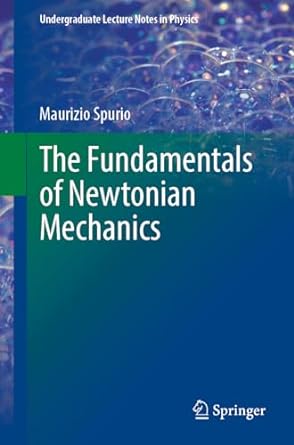Still making use of the three quantities introduced in the question 13, using dimensional analysis get the
Question:
Still making use of the three quantities introduced in the question 13, using dimensional analysis get the quantity with the dimensions of a length, \(l_{P}\), called Planck's length. Express \(l_{P}\) in \(\mathrm{m}\).
Question 13
Three fundamental magnitudes connecting quantities defined in mechanics are: \((i)\) the speed of light in vacuum, \(c=299792458 \mathrm{~m} \mathrm{~s}^{-1}\); (ii) Planck's reduced constant, \(\hbar=1.0545910^{-34}\) J s. It defines the "quantum" of angular momentum, a quantity introduced in Chap. 7; (iii) the universal gravitation constant \(G=6.6725910^{-11} \mathrm{~N} \mathrm{~m}^{2} \mathrm{~kg}^{-2}\), introduced in Chap. 10. In the standard model describing the macrocosm (Big Bang theory) the combination of these fundamental quantities assumes an extremely important role. Using dimensional analysis, obtain by combining \(\hbar, c\) and \(G\) a quantity with the dimension of a mass. This quantity is denoted by \(m_{P}\) and is called Planck mass. Determine its value the \(\mathrm{kg}\) of \(m_{p}\). [Note: \(1 \mathrm{~N}\) (newton) \(=1 \mathrm{~kg} \mathrm{~m} \mathrm{~s}^{-2} ; 1 \mathrm{~J}\) (joule) \(=1 \mathrm{~kg} \mathrm{~m}^{2} \mathrm{~s}^{-2}\) ].
Step by Step Answer:






